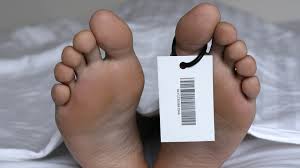Need Help? Call Now
1-800-952-8444Free Consultation
Need Help? Call Now
1-800-952-8444Posted on May 30, 2014

In-hospital mortality rates provide the public with telling measures of how statistically safe their visit to a local hospital is based on its past track record. However, it is difficult to understand precisely why these rates are constantly changing. We investigated this issue and found a handful of key reasons for increased in-hospital mortality rates, beginning with nursing workload.
Nurses play a large role in patient care throughout every hospital. For patients with severe but not urgent ailments, an understaffed nursing crew can be a real-life nightmare. For patients with urgent problems such as cardiac arrest, a high nursing workload can result in a preventable death. High nursing workloads have recently become more common due to a shortage of qualified nurses despite increased demand. Today’s nurses have more responsibilities than ever before, making it critical for hospitals to constantly maintain a qualified staff of experienced nurses.
The length of time that a patient visits a hospital also contributes to in-hospital mortality rates. The longer a patient’s length of stay, the more likely he or she is to be exposed to potential infection and/or delays in much-needed care. This is especially true within the Intensive Care Unit of hospitals where many weakened and highly vulnerable patients are kept. In terms of a patient’s emotional stress, which oftentimes contributes to their physical condition, a mounting hospital bill awaiting them on discharge can be overwhelming.
Unfortunately, a major component in increasing in-hospital mortality rates is the time of day, week, and year that a hospital visit takes place. The best and most experienced healthcare providers get first pick of vacation time and shift scheduling, which typically leads to the least desirable shifts being staffed by less experienced and lower ranked healthcare providers. As weekends, holidays, and evenings are the least desirable times to work, they commonly end up being the most risky times to visit a hospital. Additionally, the month of July has been found to have the highest in-hospital mortality rate due to the annual arrival of recently graduated medical students entering internships and residencies.
Although patients can’t avoid getting sick, it is helpful to be aware of risk factors visiting the ER. To check out in-hospital mortality rates in your area, do a search on your state’s hospitals through your internet search engine.
Call 1-800-952-8444